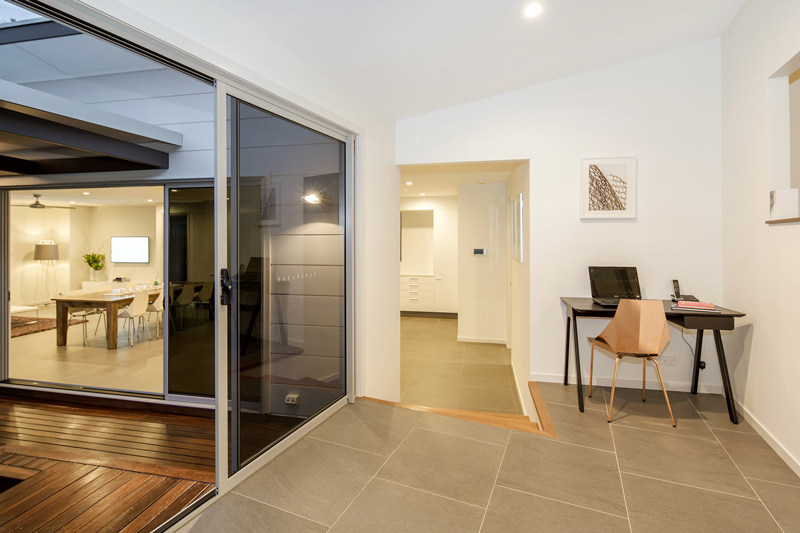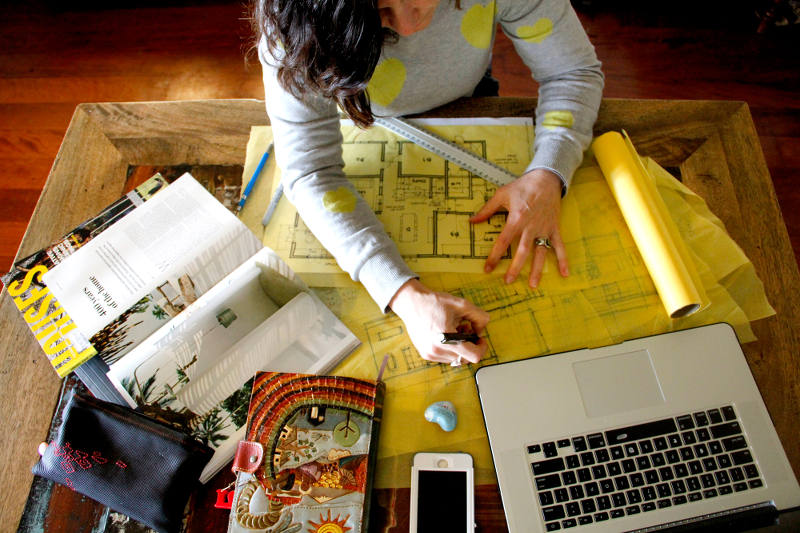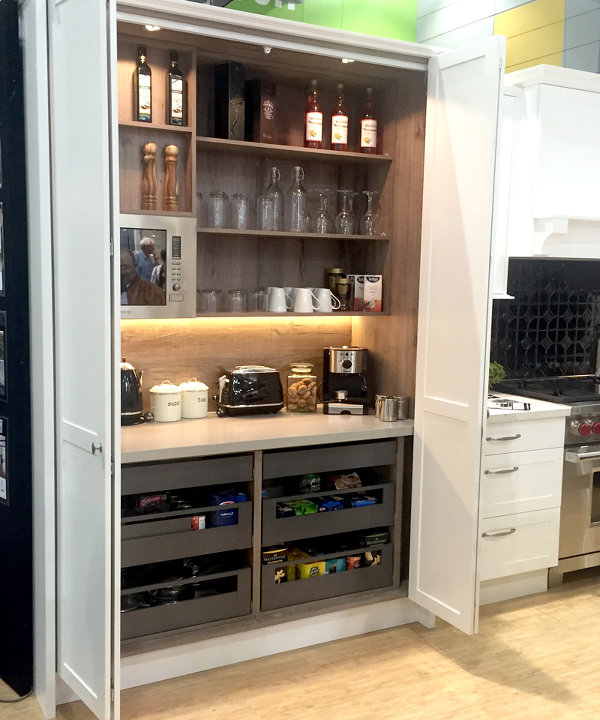Undercover Architect – how to design a family home that really works

Your home is where you set out from each day into the world, and it’s where you return to rest and recuperate. How it’s designed can radically impact how it feels, and how you feel in it. Families grow and change too, and a well designed home can accommodate years of love and growth. So how do you design a family home that really works? Here are seven expert tips to help.
Amelia Lee, from Undercover Architect, has agreed to share her secrets with Babyology readers for designing a family home that works for every stage of your life with kids.
Tip 1: Become a sun worshipper
Research shows that our health and wellbeing improves with regular access to natural daylight. Designing for how the sun moves across your site and home is the single biggest thing you can do to create a home that works and feels great. Using free natural sunlight and breezes to heat and cool our spaces also means lower energy bills.

Tip 2: Be a master of your own domain
Use your design to maintain privacy. Managing the views in and out of your home through its design will enhance that feeling of security and safety within it. Think about:
- How does someone arrive at the front door of your home?
- How much of your home is visible when you open your front door?
- Can you keep an eye all around your home casually from inside?
- Can neighbours and passersby look into your home?

Tip 3: Keep connected
With young and growing families, our busy lives mean we need to get daily tasks done while also supervising or entertaining kids. As kids get older, creating opportunities for casual connection can help us regularly communicate. Some of the ways to do this are:
- Get great views of inside and outside from your kitchen.
- Create a study nook near the kitchen to easily supervise computer use.
- Design casual areas where people can congregate easily during everyday activities. A big island bench is a great example.
- Don’t forget that being able to hear as well as see can be handy.

Tip 4: Useful is beautiful
You may not have all the space in the world, but you can make the space you have do lots of jobs so it’s always really functional:
- Simply shaped rooms are easier to furnish.
- Draw furniture on your design plans to be sure it fits, and then locate doors and windows to accommodate.
- Use the edges and corners of rooms to create intimate spaces within larger ones.
- Design your movement through and between rooms so furniture doesn’t get in your way.
Tip 5: Get it right with space and flow
It’s easy to be seduced by gorgeous images of magazine-worthy homes, but what will really impact you is the space and flow of your home. Even if you can’t choose the expensive fittings you want now, getting the space right will be a much better investment. Those other items can come later.

Tip 6: Instantly declutter
Here are a few design tricks you can use:
- Include a butler’s pantry in your kitchen design to hide away messy activities and appliances.
- No room? Consider putting bench space inside a cupboard. Doors can open to reveal it when required, and be shut when a quick tidy up is needed.
- This works for other storage too. Review the regular activities of your lifestyle – particularly leaving and arriving at the home. Create storage solutions that help hide this from view. Put power points inside cupboards for charging devices out of view.

Tip 7: Sweet dreams for everyone
Remember your kids are little for less time than they’re big! They may need to sleep near your room only for a short time and then you’ll want some separation between their bedroom and yours. A good size for kids’ bedrooms is 3.2m x 3.2m (plus their wardrobe) to fit a single bed and desk while they’re younger, and a double bed when they’re older (some parents like this option).

And remember … your forever home may not be forever
A newly built or renovated home is an amazing opportunity to shape exactly how you want it to be and look. Remember, you can create a home with general appeal while still making it uniquely yours. Designing a functional, durable home that will be loved by many families will help you sell, if and when the time comes.
Tastes and trends change over time – even yours – so go for neutrals in the expensive or permanent items. Add personal touches in your finishes and soft furnishings. So much of the success in designing a home comes with the order in which you make your choices. Prioritise your choices with this framework, and you’ll be creating a home that will help you and your family thrive. And isn’t that what we really want from our homes?
(Amelia Lee, the Undercover Architect, is a wife, mum to three young kids, an architect and serial renovator. Her blog offers useful tips, ideas and advice to support and inspire you as you create or transform your home.)









